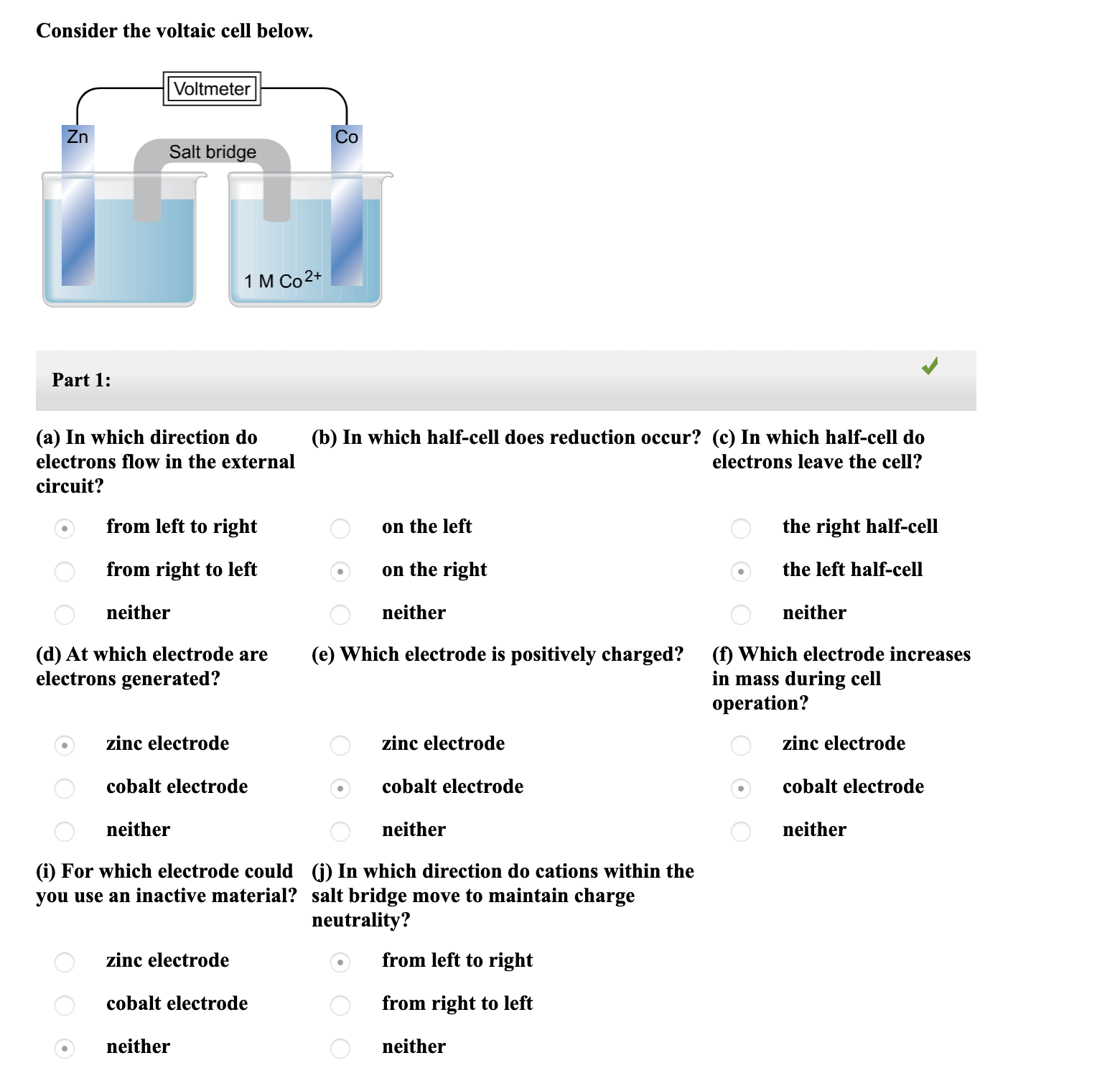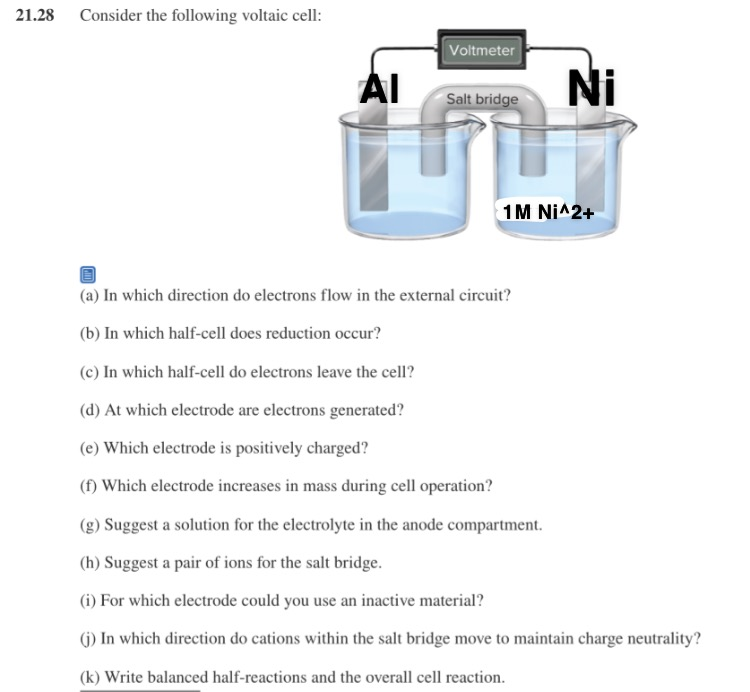For Which Electrode Would You Use an Inactive Material
G Suggest a solution for the anode electrolyte. D At which electrode are electrons generated.

Solved Consider The Following Voltaic Cell For Which Chegg Com
For materials with wide root openings select an electrode such as an E6012 that creates a concave weld face suitable for bridging gaps and making groove welds.

. Rubber catheters or other materials should not be used as a sheath on active electrode tips. There the active electrode acts as the anode which provides the cations to the electrolytic solution. The electrochemical performance of lithium iron phosphate LiFePO 4 electrodes has been studied to find the optimum content of inactive materials carbon black polyvinylidene difluoride PVDF polymer binder and to better understand electrode performance with variation in electrode composition.
I For which electrode could you use an inactive material. The active electrode can be oxidized or reduced. A semiconductor an electrolyte a vacuum or air.
Electroplating is the process where one metal is applied on another metal with the use of an electrochemical cell. Brass does not resist wear as well as copper or tungsten and has a lower conductivity than copper but is much easier to machine and can. The exceptions would be in very light sheet-metal using 6010 or 6011 run electrode negative reduce the heat and penetration on the work.
An electrode is an electrical conductor used to make contact with a nonmetallic part of a circuit eg. Active electrodes are mostly used in electroplating. Brass materials are used to form EDM wire and small tubular electrodes.
Zinc plating you could use the same metal as the one you are plating. Depending on the type of electrode used and the method of protecting the weld from oxidation arc welding can be. E Which electrode is positively charged.
Be sure prep solutions are thoroughly dry and fumes have dissipated before ESU activation. H Suggest a pair of ions for the salt bridge. F Which electrode increases in mass during cell operation.
Instead of such inactive material you can try with composites of other recent cathodic materials. With high levels of. The electrodes are considered to be conductors of electric current which at the same time serves as additional material in arc welding.
It does not participate or interfere in the chemical reaction but serves as a. The conductive matrix needs to have suitable sites for grow-ing active materials and its mechanical properties play a decisive role in its application. Titania is a photoanode material which has no performance in the cathode counter electrode.
For applications of the electrodes in wearable and flexible electronic devices conductive substrates need to be able to be bent or even. An inert electrode is a metal submerged in an aqueous solution of ion compounds that transfers electrons rather than exchanging ions with the aqueous solution. One simple method for obtaining high-energy batteries involves reducing the amount of electrochemically inactive components in the battery eg conductive carbon binders current collectors electrolytes and separators by controlling electrode and battery design parameters eg electrode composition thickness and porosity.
When the electrode contains low levels of inactive material 2 PVDF and 16 carbon calendering significantly reduced the bulk resistance of the electrode. Electrodes are essential parts of batteries that can consist of a variety of materials depending on the type of battery. If you must use alcohol-based skin preps do not allow them to pool near the dispersive pad.
Material is the basis of the binder-free electrode. Today in practice we usually use bare or coated metal electrodes. In many processes a popular option is platinised titanium mesh.
Mesoscale simulations conducted by Partha Mukherjees research group at Purdue University have revealed the role of the morphology of the inactive or secondary phase material in lithium ion battery electrodes. The electrophore invented by Johan Wilcke was an early version of an electrode used to study static electricity. Also in some stick hardfacing EN is better sometimes.
If you were performing a plating process eg. The rationale there is that when you assemble a stack of electrodes you want them to operate for as long as possible without needing maintenance. The results published in a recent issue of ACS Applied Materials and Interfaces could be used to optimize battery performance to.
If youre working on a joint with a tight fit-up or one that is not beveled use an electrode that provides a digging arc to ensure sufficient penetration such as an E6010 or E6011. Trade-offs between inactive material content and electrochemical. Brassis an alloy of copper and zinc.
Apparently despite the low electronic conductivity as measured with the four-point probe for some of our electrodes with low levels of inactive material the overall cell resistance which includes the separator the lithium counter electrode the cell hardware and any contact resistances among these components for the full cells was very similar. -E-stim involves the active or stimulating electrode the one that exhibits the greatest current density and the dispersive or inactive electrode delivers less current density-Electrodes should be sized appropriately for the desired result ie. For stick welding as SBerry likes to say generally set it to electrode positive break the knob off.

Answered Consider The Voltaic Cell Below Bartleby

Solved This Window Shows Your Responses And What Was Marked Chegg Com

Solved 21 28 Consider The Following Voltaic Cell Voltmeter Chegg Com
No comments for "For Which Electrode Would You Use an Inactive Material"
Post a Comment